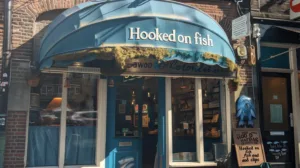
How do customers decide?
Optimise your sales How do customers choose? Optimise your sales funnel by knowing your customer.
Traditionally, gifting a customer happens after the purchase. A little goodie or membership or some kind. Free samples are given out pre-purchase and should increase the customer’s interest in the product. Non-either the less, the most fundamental idea is to gift the customer after a purchase.
„Increase sales using psychology, the effect is called reciprocity“ – Levin Vonester
People want to give back. So the marketing strategy behind this is not to gift post-purchase but to gift pre-purchase. Not by giving out free samples but by gift the customer something that shows appreciation for his bare interest. It must be a gift given so it does not create the impression of “strings attached”. This means it should not be a promotional item that should lead to a purchase of that exact item but a non-bias item that the customer should just enjoy or find useful.
The Study “The effect of a Gift-Upon-Entry on Sales: Reciprocity in a Retailing Context” by Hershey H. Friedman and Paul J. Herskovitz has shown, that the effect of reciprocity and a gift pre-purchase increases the money spent by the customer. (https://www.emerald.com/insight/content/doi/10.1108/19355181199000006/full/pdf?title=the-effect-of-a-giftuponentry-on-sales-reciprocity-in-a-retailing-context)
Their study went over a period of five weeks and 200 shoppers in total were tested. 100 shoppers were presented with a 50-cent key chain, which did not display any logo whatsoever. At the entrance, they were told, “I’d like to thank you for coming into ___ Pharmacy today, and as a token of our appreciation, I’d like to give you this gift.” The other 100 shoppers got nothing. This test was conducted without shoppers being aware of it.
The result of this study was that those who received the gift spent 10.76 $ with a standard deviation of 5.84 $. The non-gifted shoppers spend 9.21 $ with a deviation of 6.40 $. This means that the gifted shoppers spend 1.55 $ more than those who did not get a gift.
Depending on the industry, the product type, the different spendings of people who got gifted beforehand increases significantly.
The same effect can be seen in restaurants. Most hand out the bill with a mint. This should increase your tip. Because it is used that frequent, we got used to it and it has lost some of its effects. This effect can be increased again if the waiter, after presenting the plate with the bill and one mint, turns around on his way back and presents s second mint to us. In a study, tips have increased by 23%.
The reciprocity effect is a basic psychological construct of caring and giving. If somebody is pleasant to us, we want to give the same experience back to him. We also tend to give more back than we receive just to show that we appreciated what the person has done for us. The important conclusion for retailers is that the gift does not have to be expensive and displays an advertisement on it. In fact, when a customer receives an advertisement goodie, it decreases the human factor and increases the commerce feeling. We want the humanistic feeling of joy, happiness and gratitude, this is why meaning it, not trying to sell, “no strings attached” is more powerful.
This is how you can increase your sales using psychology.
We should try to implement this into our retailing experience and spread gratitude.
What is your take on this? Also, I would appreciate short feedback after having taken the time to write this article for you guys and women, out there.

Optimise your sales How do customers choose? Optimise your sales funnel by knowing your customer.

Stempelkarten und der “Endowment Effekt” Kunden an das Unternehmen zu binden, indem sie beispielsweise ein

Wie simple Kommunikation funktioniert Kleinere Marken spielen auf einem anderen Level als Große. Das ist